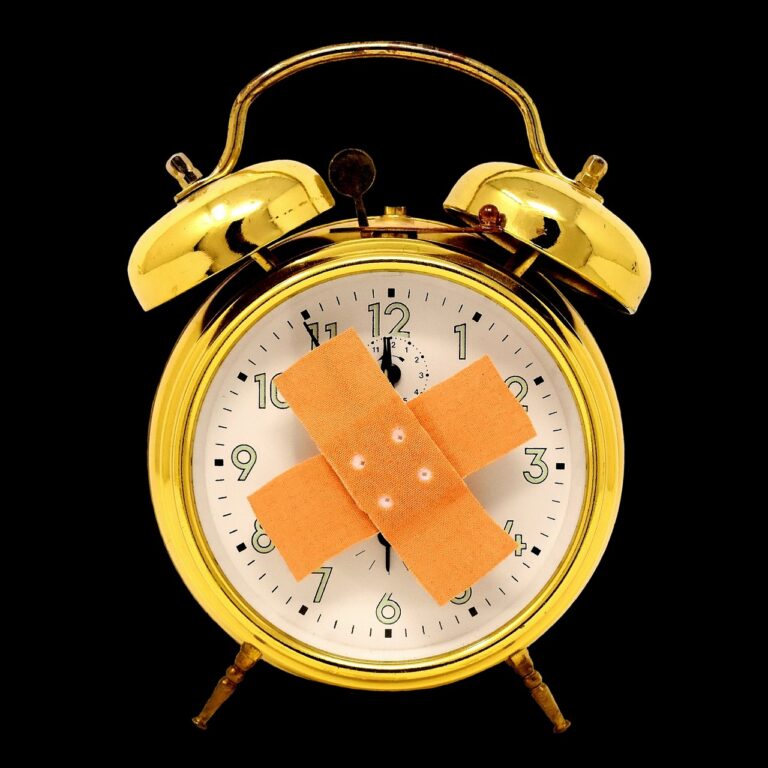The Benefits of Acupuncture for Pain Management
Acupuncture is a traditional Chinese medicine practice that involves inserting thin needles into specific points on the body to alleviate pain and promote healing. This holistic approach to pain relief is based on the concept of balancing the body’s energy flow, known as Qi, to address various physical and emotional issues. By stimulating acupuncture points, practitioners aim to restore harmony within the body and address the root cause of pain rather than just masking the symptoms.
Many individuals turn to acupuncture as a natural and non-invasive alternative to conventional pain management methods. By treating the body as a whole system rather than focusing solely on the area of pain, acupuncture can help improve overall well-being and enhance the body’s ability to heal itself. As a holistic approach, acupuncture takes into account the interconnectedness of the body, mind, and spirit, providing a comprehensive treatment for pain relief and promoting a sense of balance and harmony within the individual.
Understanding the Basics of Acupuncture Treatment
Acupuncture treatment is rooted in traditional Chinese medicine and is based on the concept of balancing the flow of energy or qi within the body. Thin needles are inserted into specific points along the body’s meridians to stimulate the body’s natural healing response. These acupuncture points are believed to correspond to different organs and bodily functions, and the goal is to restore harmony and proper function.
During an acupuncture session, the practitioner will assess the patient’s symptoms and health history to determine the appropriate acupuncture points to target. The needles are typically left in place for about 15-30 minutes while the patient relaxes. Many people find acupuncture to be a gentle and relaxing experience, with some even falling asleep during the treatment. The number of sessions required varies depending on the individual and the nature of their pain or condition.
The Science Behind Acupuncture for Pain Management
Acupuncture is rooted in the concept of balancing the flow of energy, known as qi, within the body through the insertion of thin needles into specific points. From a scientific perspective, acupuncture has been shown to stimulate the release of endorphins, the body’s natural pain-relieving chemicals, as well as other neurotransmitters that help modulate pain signals in the brain and spinal cord. This process can interrupt the perception of pain and promote a sense of well-being.
Additionally, acupuncture is thought to promote the circulation of blood and lymphatic fluid, aiding in the delivery of oxygen and nutrients to tissues while removing waste products. Research suggests that acupuncture can also trigger the release of anti-inflammatory molecules, reducing swelling and promoting healing in injured or inflamed areas of the body. By understanding the neurophysiological mechanisms behind acupuncture, healthcare providers can better appreciate its role in pain management and overall wellness.
How Acupuncture Targets Pain Points in the Body
Acupuncture, an ancient practice originating from Traditional Chinese Medicine, targets specific points in the body to alleviate pain and promote overall well-being. By stimulating these acupoints through the insertion of thin needles, acupuncturists aim to restore the flow of Qi, or vital energy, along the body’s meridians.
The selection of acupoints is based on the individual’s symptoms, diagnosis, and the acupuncturist’s expertise. These points are believed to correspond to specific organs and bodily functions, with the goal of rebalancing the body’s energy and addressing the root cause of pain. The precise placement of needles triggers a cascade of physiological responses, including the release of endorphins and other neurotransmitters, which can help reduce pain perception and promote healing.
The Role of Acupuncture in Managing Chronic Pain
Acupuncture has been widely utilized as a complementary therapy for chronic pain management. By targeting specific acupoints along the body’s meridians, acupuncture seeks to restore the balance of qi, or life force energy, to alleviate chronic pain conditions. The ancient practice is believed to stimulate the release of endorphins and other neurochemicals, promoting pain relief and overall well-being.
Chronic pain, characterized by persistent discomfort lasting for weeks, months, or even years, can significantly impact a person’s quality of life. Acupuncture offers a non-invasive and natural approach to managing chronic pain, providing patients with an alternative to conventional pain medications and treatments. By addressing the root causes of pain and promoting the body’s self-healing mechanisms, acupuncture plays a valuable role in the holistic management of chronic pain conditions.
Benefits of Acupuncture in Reducing Inflammation and Swelling
Acupuncture has been found to be effective in reducing inflammation and swelling in various parts of the body. By stimulating specific acupoints, acupuncture helps to improve blood circulation and promote the body’s natural healing response. This can lead to a decrease in inflammation, which is often the root cause of pain and swelling in many conditions.
Furthermore, acupuncture has been shown to regulate the immune system, helping to reduce the body’s inflammatory response. This can be beneficial for conditions such as arthritis, tendonitis, and other inflammatory disorders that contribute to pain and swelling. Many patients report feeling a significant reduction in inflammation and swelling after regular acupuncture sessions, allowing them to experience improved mobility and a better quality of life.
Acupuncture for Improving Blood Circulation and Healing
Acupuncture is believed to improve blood circulation by stimulating specific points on the body. This stimulation can enhance the flow of oxygen, nutrients, and vital energy throughout the body, aiding in the healing process. By targeting key acupuncture points, practitioners aim to restore balance and promote overall well-being.
In traditional Chinese medicine, it is thought that when the body’s energy, or qi, is blocked or imbalanced, it can lead to various health issues, including poor circulation. Acupuncture seeks to unblock these energy pathways and restore harmony within the body, allowing for improved circulation and faster healing. This holistic approach to healing considers the interconnectedness of the body’s systems and aims to address underlying imbalances to support the body’s natural healing mechanisms.
The Psychological Effects of Acupuncture on Pain Perception
Acupuncture, beyond its physical benefits in pain management, has also shown to have psychological effects on how individuals perceive and experience pain. The process of undergoing acupuncture treatment can promote relaxation and a sense of well-being in patients, which may help alleviate their perception of pain. This calming effect can be attributed to the release of endorphins and neurotransmitters triggered by acupuncture, leading to a reduction in stress and anxiety levels that are often associated with pain.
Moreover, the individualized approach of acupuncture treatment, where the acupuncturist evaluates the patient’s specific symptoms and needs, can foster a sense of empowerment and control over one’s own health. By engaging the patient in the treatment process and tailoring it to their unique circumstances, acupuncture can contribute to a positive psychological outlook and a feeling of being actively involved in managing their pain. This personalized approach can instill a sense of hope and optimism in patients, which can play a significant role in influencing their perception of pain and overall well-being.
Combining Acupuncture with Traditional Medicine for Enhanced Pain Relief
Acupuncture, a traditional Chinese medicine practice involving the insertion of thin needles into specific points on the body, has gained recognition for its effectiveness in pain management. When combined with traditional Western medical approaches, such as medications or physical therapy, acupuncture can offer enhanced pain relief for individuals suffering from chronic pain conditions.
While acupuncture can be utilized as a standalone treatment, integrating it with traditional medicine can provide a more comprehensive approach to pain management. By combining the holistic principles of acupuncture with the evidence-based practices of Western medicine, patients may experience synergistic effects that address both the physical and energetic aspects of pain. This integrative approach not only targets the symptoms of pain but also aims to address the underlying causes, promoting a more balanced and effective path to healing.
Potential Side Effects and Risks of Acupuncture for Pain Management
Acupuncture, like any medical treatment, comes with potential side effects and risks. While acupuncture is considered safe for most people when performed by a qualified practitioner, there are a few precautions to keep in mind. One possible side effect is soreness, bruising, or minor bleeding at the insertion sites of the needles. This is usually mild and temporary, but it’s essential to discuss any concerns with your acupuncturist.
In rare cases, more severe side effects such as nerve damage, organ injury, or infections can occur if the acupuncturist is not properly trained or uses unsterilized needles. It is crucial to choose a licensed acupuncturist who follows strict hygiene practices and uses disposable needles to minimize these risks. Additionally, some people may experience dizziness, fainting, or fatigue during or after an acupuncture session, so it’s advisable to rest and hydrate adequately post-treatment.
Is acupuncture safe for pain management?
Acupuncture is generally considered to be a safe practice when performed by a trained and licensed practitioner. However, like any medical treatment, there are potential side effects and risks to be aware of.
What are some common side effects of acupuncture?
Some common side effects of acupuncture may include soreness at the needle insertion sites, bruising, and mild bleeding. In some cases, patients may experience dizziness, fatigue, or nausea after a session.
Are there any serious risks associated with acupuncture?
While serious complications from acupuncture are rare, there is a small risk of infection, nerve damage, or puncturing of organs if the needles are not properly inserted. It is important to seek treatment from a qualified and experienced practitioner to minimize these risks.
How can I minimize the risks of acupuncture for pain management?
To reduce the risks of acupuncture, make sure to choose a licensed and reputable practitioner, discuss your medical history and any concerns with them beforehand, and follow their aftercare instructions carefully. It is also important to report any unusual or severe reactions to your practitioner.
Can acupuncture be combined with other pain management treatments?
Yes, acupuncture can be used in conjunction with other pain management strategies, such as medication, physical therapy, or chiropractic care, to enhance the overall effectiveness of treatment. It is important to consult with your healthcare provider to develop a comprehensive pain management plan.







